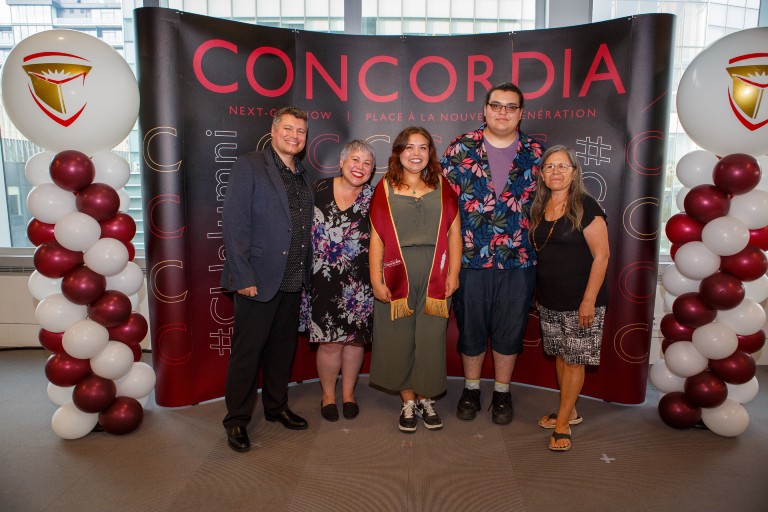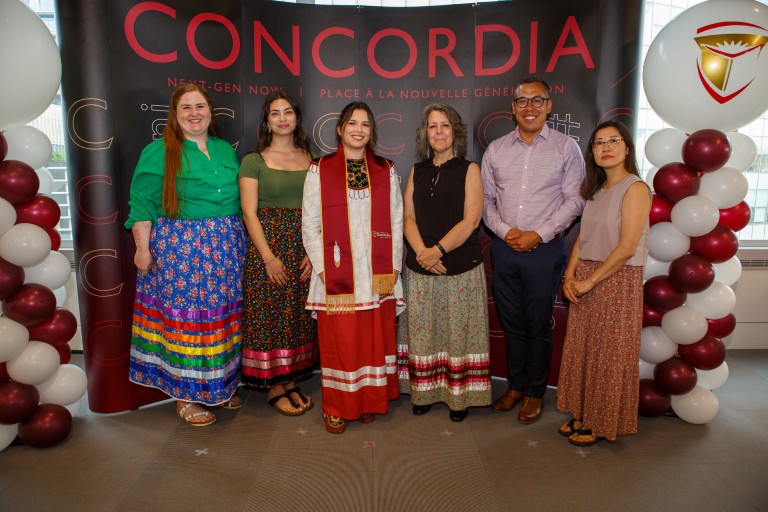Daphnée Cardinal
BA, Sociology
Anishinaabekwe, from Timiskaming
What motivated you to come to Concordia?
Daphnée Cardinal: I first started undergrad at a different university, where I didn’t feel like I belonged. During that time, I took a course at Concordia in First Peoples Studies, taught by Donna Kahérakwas Goodleaf. At the time, it was mind-blowing how actual Indigenous methodologies were used. It was a class on First Peoples’ healing, which was so serendipitous, because I needed healing as well. That’s how I first decided to come to Concordia.
What were some highlights during your time at Concordia?
DC: In sociology, I took classes that were tailored for community engagement, that were much more hands on than my previous university experiences. In a class about food and sustainability, I worked with the mind.heart.mouth garden at Loyola Campus to build a food guide and recipes based on what was available through the garden.
It’s a different way of learning that resonated with land-based practices and Indigenous ways of learning, but not only in the context of a First Peoples Studies class.
What was the role of the Otsenhákta Student Centre during your time at Concordia?
DC: At Otsenhákta, I was able to make connections with students from different communities, find resources and learn about and participate in cultural activities together. It was also a safe space to debrief and unwind after frustrations and disappointments if I wasn’t feeling heard.
While I was studying, I also worked at Otsenhákta. It’s an amazing team, and it was great to build community along with people who have the same goals.
What are your next steps?
DC: Studying sociology gave me a strong base and vocabulary to understand why the world is the way it is. Now I want to focus more on art and creation to find solutions to better Indigenous people’s lives and well-being.
In the fall, I’ll be starting a fashion design program in CEGEP. I want to incorporate our traditional knowledge and focus on seasonal, cyclical creation. My goal is to build something in the community that can lead toward economic sovereignty.
Do you have any advice for Indigenous students who will be coming to Concordia?
DC: Go to the Otsenhákta Student Centre — that should be your first stop! Don’t feel ashamed to take the space you deserve. Sometimes change happens because one person said something and others agreed.







